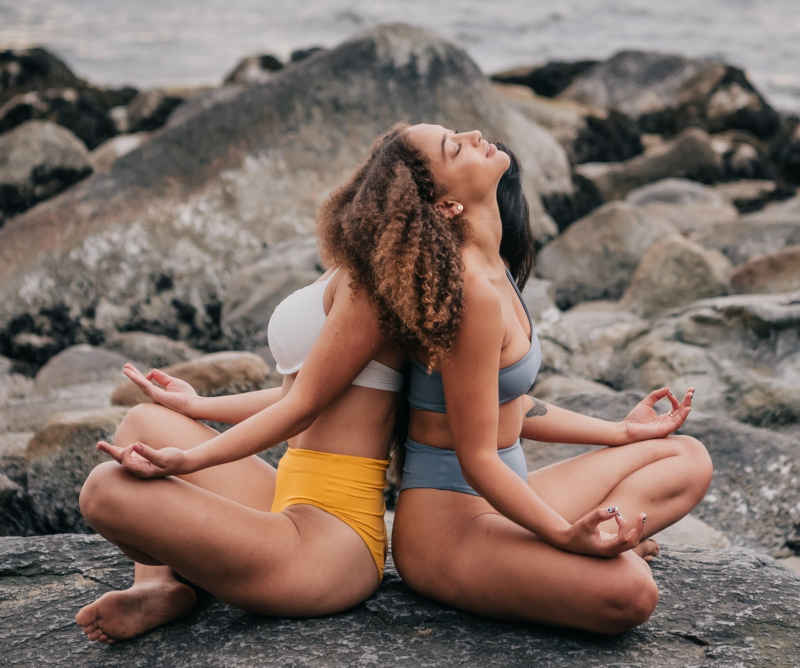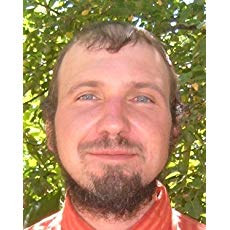Learn the complete Ujjayi breathing technique from the ridiculous video and the less ridiculous article below. Think of it as Ujjayi 2.0. The Ujjayi Pranayama breath is also known as the Ocean Breath.
This was part of an old series of videos which I mostly deleted because people were groaning too much. You will probably learn a lot from it, however, if you even dare to watch the darn thing. You will learn even more from the information below it, but you may find the audio and visuals very helpful because it is a complex technique.
By the way, the video goes well with DMT according to a survey.
Now I feel like a presidential candidate talking about smoking weed in the good old days. Anyway…
Yoga Breathing techniques such as Ujjayi are some of the most powerful techniques which prepare the mind for serene and deep meditation
Like most forms of Yoga breathing, Ujjayi Pranayama is a breathing technique that brings profound results. The Ujjayi breathing technique stills the mind and “prana”. This results in a sense of deep inner stillness and peace.
What is Ujjayi Breathing?


Yoga Pranayama is not just a set of breath exercises. Yoga Pranayama is the gateway to the stilling of agitated prana or energy. When the prana is stilled through pranayama, then your perception will slip into a state that is beyond prana – beyond energy. Such a meditative stillness is known as Spirit. Spirit is beyond all energy and form.
Ujjayi (pronounced “oot – jie ‘[rhymes with “pie”] – yee” or “oo – jie’ – yee” or at least close to these depending on dialect) is the author’s personal favorite pranayama. The Ujjayi breath ushers in a profound meditative state, oxygenates the blood and balances the male and female energies.
The advanced form of Ujjayi described below is very similar to some versions of the Microcosmic Orbit – the circulation of chi in Chi Gong. Like Alternate Nostril Pranayama, it is great at the end of a warm up sequence. You may spontaneously go so deep into meditation that you will abandon the meditation technique you were planning to follow it with.
Do not strain the Ujjayi breath. The more relaxed you are, the more you will feel it in the spine. Relax into the spine during this exercise. You can try some of spine limbering exercises before you begin.
We will learn this in parts. When you are learning how to juggle five balls, it helps to learn how to juggle two balls first, then three, then five.
Ujjayi Pranayama Breathing Instructions


1. Remember to keep the legs relaxed during your Ujjayi breathing practice.
2. Sit in sitting posture with back straight. Fix your Throat Lock Bandha by pulling your chin down and in toward the upper chest. Stack all your vertebra one on top of another, especially the upper vertebrae. The throat lock is 90% mental. It directs the breath up and down the spine so that the prana does not leak with an “airy sound”. Your eyes are closed. However, if they were open, you would be staring straight ahead with your nose pointing forward.
3. Place the bottom of your tongue to the roof of your mouth. The tip of your tongue is pointing toward the back of the mouth, as far back as it can go without strain. When you’re completely relaxed, either in a few minutes or a few years, the tongue will enter the throat.
4. Stretch your forehead up so that the eyebrows are raised and there is pressure on the point between the eyebrows. There should be some “krinkle” in the forehead. Close your eyes and look into the spot between the eyebrows. Once this and the Throat Lock are in place, make sure that the jaw and tongue are relaxed.
5. Empty your lungs completely with a slow exhale, then relax your belly for the next inhale.
6. With your Throat Lock, inhale completely through the nose, making the sound of distant ocean waves on the beach. It should be pretty loud and felt where your chest meets the back of the neck as well as the back of the palate where it meets the throat, but on top of the palate. At the same time, it should feel like it originates in your belly like a diaphragmatic breath. Your belly should not puff out. Your diaphragm will feel like it’s massaging the spine in back of the naval while also massaging upward.
7. Hold for a couple seconds after the full inhale. Love your crown.
8. Exhale the same way you inhaled. Similar volume and force, feeling it in the same places, the same ocean wave sound, etc. Each inhale and exhale is probably about 10 seconds long.
9. Hold for a couple of seconds and love your perineum. “See” the perineum with the third eye and crown.
10. Full inhale, hold, full exhale.
11. Keep practicing this before progressing further. You are doing this correctly if you stick a finger underneath your nostrils during the exhale and cannot feel air coming out of it. This means that you are exhaling carbonic acid instead of carbon dioxide. This is good. When you reach this point, try the next steps. If not, adjust your Throat Lock, clear any phlegm and relax into your spine.
If you still have troubles, exhale through your mouth with the silent “ha” sound like you are fogging up a mirror. Then, close your mouth and replicate the same feeling and sound. You should feel it in the same places in the mouth and throat.
12. Note: The sound should be solid and consistent. If there are multiple sounds in the breath, especially “airy” sounds, it could be either phlegm or the throat lock needs to be adjusted. Phlegm will definitely cause “leakage”. You should probably stop, quickly clear your throat and swallow, then put your tongue back in place and continue.
13. Now, we’re adding another element. When you inhale, follow the breath up from your perineum through the back of the spine. Your breath is going through each of your chakras and all the way up through the crown. Remember to hold and love your crown while basking in the stillness.
14. When you exhale, let the breath travel down the front of your spine, through the tongue via the pallet, through each chakra, all the way down to your perineum. Do not force the breath up or down the spine. It will feel like it’s travelling at its own pace. You may see it as light or a feeling. It is possible that you will experience warm light rushing down the front of your body on the exhale. Remember to relax and watch the breath going up and down the spine.
15. One more element that you can add is the perineum bandha. When you begin the inhale, tighten and pull the perineum and anus back toward the spine. Guys will feel like they’re holding back a pee. This bandha guides the energy up the spine more efficiently just as the tongue position guides the energy downward.
16. When you exhale, gradually release the perineum bandha. Some people will get a little winded at the end of an exhale. You can take a few shallow rapid breaths to get back on track. Then, empty the lungs, relax the belly and inhale again.
TIP
Throughout the entire exercise, imagine yourself sitting in the top of your crown. You are watching the entire Ujjayi breathing movie from there. When you note the stillness at the bottom of the breath, remember to watch it from the crown.
Benefits for People with Asthma & Insomnia


Asthmatics and insomniacs will love the Ujjayi Pranayama breathing technique. If you are in relatively good health, you may extend the breath retention at the top and bottom while basking in the stillness. This is not recommended for some other health conditions.
An Alternative Ujjayi Orbit Route


The Taoists, in the Microcosmic Orbit, like to begin the circulation in the navel center and bring it down to the perineum. Then, they circulate the energy just as in this form of Ujjayi breathing. They will end the exercise in the navel center. The navel is good for storing chi, so maybe they have the right idea. Just a thought.
The Ujjayi breathing technique is an excellent part of your complete meditation warm up strategy. It is best to perform Yoga breathing techniques, especially Ujjayi Pranayama right before you begin your meditation practice and at the end of a warm up routine.
You have just learned how to do Ujjayi Pranayama. Enjoy it.
Share Your Insights or Questions
What are your experiences with Theta mind states? Share them in a comment below.
Is anything unclear/wrong/etc? Ask a question or chime in with some input below.
Tom Von Deck is a meditation trainer, speaker, and speaker. Tom specializes in making meditation much much easier for busy and non-busy people from all backgrounds and paths. He is the Mackdaddy of The Deeper Meditation Video Zone and DeeperMeditation.net.



7 comments
Pauleen
Thank you for a well explained and informative video and text. I appreciate it and was interested to note the bhanda at the end of the breath and the eyebrow raise.
again – thank you!
David Underwood
Thank you for bringing awareness to the value of this under-rated breath not only as a pre-meditative warm up but I use it through out the day anytime, especially walking and daily activities. I teach yoga and meditation in DC, and I am the only teacher in my studio who uses this!I play with the exhale more and tend to try and find that space between exhale and inhale and let inhale come on strong. Namaste David
scarborough photographs
I do believe all of the concepts you have introduced in your post.
They are really convincing and will definitely work. Nonetheless, the posts are too quick
for starters. Could you please prolong them a bit from subsequent time?
Thank you for the post.
b h dehadray
Just started but thanks for explaining such nicely
musik mp3
Hi there, its good article concerning media print, we all understand media is a fantastic source of
facts.
Nicholas
The first time I tried it I immediately felt at peace.
emilia
so helpful ideas. thank you.